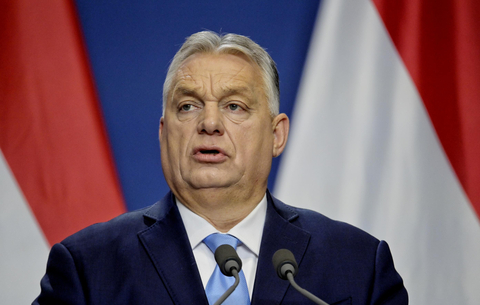Former young communists, avanti!
The electoral success of the Ferenc Gyurcsany's Socialist Party, and the rehabilitation of the Italian communists, show that organisation and focus are not a reflection of ideology, and that left-wing ideas have positive associations in places where they have not been directly contradicted by the truth.
On Rome on 10 May, the two houses of the Italian parliament elected the 81-year-old Giorgio Naplitano as president of the Italian Republic. The former partisan has already served as president of the Italian house of representatives and was minister of the interior in the first Prodi government.
Massimo d'Alema, another former communist, also won a job in Romano Prodi's new government. By doing this, the centre-left coalition has made a point of accepting former communist politicians into its ranks
- people who in the 1970s had already been striving for independence from Moscow, who had become parts of the eurocommunist movement, promising democracy and pluralism alongside socialism.
It was not the Warsaw express that arrived in Hungary during our elections in April, but the Budapest express that reached Rome. It brought down Silvio Berlusconi, who was greatly admired by Viktor Orban, the leader of the anti-communist Fidesz party, even to the extent of borrowing his slogan 'Forza Italia', translating it into the Hungarian 'Hajra Hungary!"
But it was in vain, because a former Young Socialist activist, Ferenc Gyurcsany (who was secretary of the Pecs city Young Socialist committee from 1984 to 1988, and chairman of the Young Socialist Students' association from 1984 to 1989), won over more voters. Notice also that both Napoletano and d'Alema had also participated in their country's communist youth movement, one in the 50s, the other in the 70s. What must they have learned, what kind of a network must they have built up on both sides of the Iron Curtain to have remained popular among the political elites and the masses?
It is hard to give a straight answer, but the work of Joel Kotek, a Belgian historian, might provide some insights. It emerges that the world communist movement, which collapsed with the Soviet Union, had one highly successful and 'exportable' branch, flourishing in a world of globalising capitalism.
This was the youth movement - more precisely, the World Organisation of Democratic Youth and the International Student Association. Both were based in Prague, the 'communist Geneva.' These two organisations, which organised world youth meetings and supported the third world, became very popular among young people. Of course, few knew that both had extensive links with the KGB and other East European secret services.
It was the legendary Willi Munzenberg, who befriended Lenin in Switzerland, who devised the tactic communists used to gain political success within democratic societies. It was his idea to establish 'shop-window organisations', which influenced a broad swathe of left-wing groupings. They grew in popularity when they called for a united front against fascism. These communist activists, found in trade unions and youth movements, easily outmanoeuvred their less well organised and divided rivals. The Soviet secret services were generous in their material support for the Western communist organisations.
At the end of the 1920s, Munzenberg showed how a vast capitalist press and media organisation could be set up in the Weimar Republic to propogate the party's views. BUt his life took a sad turn. His outrage is shown by his famous aphorism: "All news is lies, but propaganda is presented as news." He confronted Stalin, having understood the bloody dictator's true aims. He was excluded from the Party, accused of being a Trotskyite. He died in suspicious circumstances in June 1940 in the forest of Le Caugnet. He was probably killed by the Soviet NKVD.
The World Organisation of Democratic Youth was established in November
1945 in the Royal Albert Hall in London by the youth organisations of
63 countries. Famous Western politicians and intellectuals participated in the ceremony. Its importance is shown by the way in which, when the second World Youth Forum was held in East Berlin in 1951, the commanders of the city's western occupying force were seriously concerned about a "peaceful reunification" of the city.
The Association, supported by the Soviet secret services, survived the collapse of the Soviet empire. Its headquarters was moved from Prague to Frangepan utca in Budapest. According to Wikipedia, it has some 110 members organisations of various sizes. Why should the leaders of Hungary's youth organisations have been any less talented than the Association's leaders? In the 1980s, the young communists managed to convert political power into economic power, and then, in less than 20 years, to gain the democratic legitimacy needed to introduce the 'new Capitalist economic mechansim.'
Even now, the forces of the past have great power, influencing the internal and external power relationships in which we live. We are still connected to the cursed 20th century by many threads, but in a way different to that imagined by the Hungarian Right.
János Pelle









